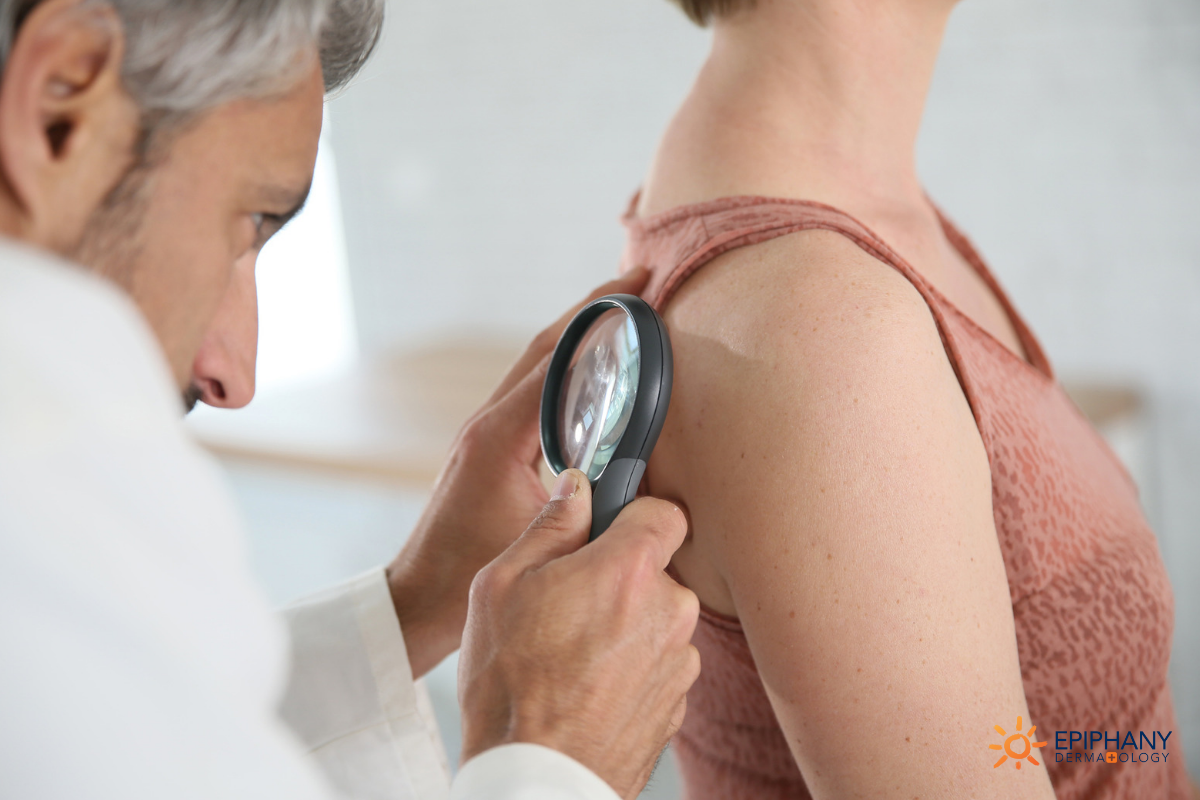ED & C stands for electrodesiccation and curettage. This procedure is also known as curettage and electrodesiccation (C & E).
ED & C is a method for treating certain types of skin cancer (including basal cell carcinoma and superficial squamous cell carcinoma) through a series of scraping and cauterizing techniques. When used on the right types of skin cancer, it is highly effective in completely removing cancerous skin cells and preventing the cancer from recurring.
What Does ED & C Treat?
Dermatologists use electrodesiccation and curettage to treat basal cell carcinoma and superficial squamous cell carcinoma.
Before we treat any form of cancer, we first biopsy the suspicious area. Depending on those results, we know if ED & C is a viable method of treatment or if another form of treatment is more effective for that particular type of cancer. Electrodesiccation and curettage is most effective for basal cell carcinoma and squamous cell carcinoma when the cancer is superficial (on the surface) or nodular (in a ball). If it’s not superficial or nodular skin cancer, we may opt for excision, radiation, Mohs surgery, or another form of treatment.
What Should You Expect During ED & C Treatment?
Before we begin any curettage and electrodesiccation treatment, we inject numbing medicine into the area. The spot, as well as a surrounding margin, will be completely numb for the procedure.
After the numbing medication has taken full effect, we begin curettage. Using an instrument called a curette, we scrape out the cancerous cells. Healthy cells are firm do not scrape out easily, while cancerous cells are unhealthy tissue. This tissue is mushy and easy to remove with a curette. We curette for several minutes, using the tool to scrape in different directions to remove all cancerous tissue.
After curetting the area, we begin electrodesiccation to cauterize the lesion. Using an electro-cauterizer, we make the blood vessels close down over the entire area. This not only stops any residual bleeding, but it also further destroys cancer cells. We electrodesicate the inside, outside, and edges of the lesion, making sure all exposed tissue is treated.
We repeat the curettage and electrodesiccation process two more times during the same procedure, increasing the likelihood of removing all cancerous cells. The final electrodesiccation destroys even more tissue, particularly in the margins around the affected area. This final cauterization also helps the blood vessels coagulate to stop any bleeding that may occur.
Often, we opt to add one additional step to this procedure — freezing. Using liquid nitrogen, we freeze the entire lesion and a margin around it to further destroy any lurking skin cancer cells.
There is no downtime after an ED & C treatment. In fact, most patients can drive themselves home after their procedure.
Electrodesiccation and curettage healing can take several weeks. Ultimately, the healing time depends on the size of the cancerous area we have removed, with larger sections taking more time to heal. Patients are given instructions on how to bandage, clean, and care for the wound until it’s completely healed.
FAQ’s About Electrodesiccation and Curettage
What’s the cure rate for ED & C?
The cure rate with electrodesiccation and curettage is about 95%. There are some cases where the cancer recurs, but if we’re using ED & C on the right types of skin cancer (not types that are more invasive), we typically eliminate all cancerous tissue.
Will I need follow-up appointments?
After treating a patient for skin cancer with ED & C, we monitor that specific area and look for any new spots to form. We like to see patients back three months after their treatment, and then three months after that. If all is clear, we ask the patient to return in six months. If there are no new areas of recurrence, we move the patient back to an annual check-up schedule.
These follow-up appointments are extremely important. You never know when skin cancer may recur or when a new spot may show itself and we want to treat them as immediately as possible.
Is ED & C painful?
No, this is not a painful procedure. We inject numbing medication before we begin curettage and the patients remain numb throughout the procedure. Because of this, patients experience very little (if any) discomfort during treatment.
Additional Resources
- Your Guide to Skin Cancer Treatment Options
- Freckle or Skin Cancer? When You Should Be Worried About Your Skin Spots
- What You Need to Know to Prevent and Treat Basal Cell Carcinoma
- What Is Squamous Cell Carcinoma? The Prevention and Treatment Guide
Click here to find an Epiphany provider near you.

